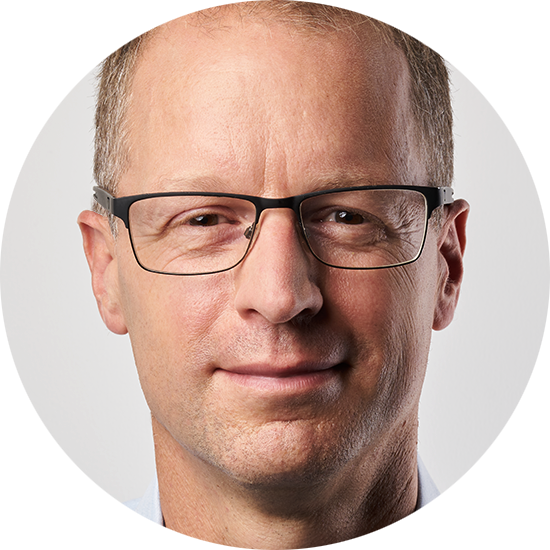

INVESTMENT
Investing Demystified
My review of Investing Demystified by Lars Kroijer. This book by the former hedge fund manager is a good summary of the basics of investment, including how to avoid the fees he used to charge.
Lars Kroijer used to be a hedge fund manager. Given the reputation of this category of investors for claiming special skill, lack of transparency about investment process, and charging high fees, it’s perhaps surprising that Kroijer’s recommendations for the typical retail investor are quite the opposite:
- Assume you don’t have skill in investments. What’s more, assume you don’t have the skill to pick someone with skill.
- Choose simple, transparent investments and stick with them for the long term.
- Minimise costs.
But this is all good advice for most successful professionals.
You don’t have edge
Perhaps the most important message that recurs throughout Kroijer’s book is that unless you’re a professional investor, you almost certainly don’t have an ‘edge’ in investment. Markets may not be perfectly efficient, but in general it’s pretty tough to outguess them. You almost certainly don’t have the ability to pick stocks or time your asset allocation in a way that improves your investment returns.
Maybe an adviser has skill in choosing funds for you. Kroijer pours cold water on this notion. Not only do you not have skill yourself, but your friendly, neighbourhood financial adviser is no more likely to themselves. Otherwise they’d likely have a better job than being your friendly, neighbourhood financial adviser.
There is evidence that active managers can have skill. In fact, detailed academic research suggests that it can be persistent. The problem is that most of the skill accrues to higher compensation for the skilled manager and the average net benefit to investors is approximately zero. So even if you have the skill to identify a top manager, the chances of you benefiting from this in terms of your own returns is small. This is born out by research from Morningstar: most active managers underperform after fees. Even in a highly unusual year like 2020, when it’s often claimed active managers will earn their corn, they don’t.
Kroijer extends his concerns about edge to residential property investment. Because they live in a house, people often erroneously believe this gives them expertise in property investment. But this isn’t true. The best property investment opportunities are sought after by people with more expertise and time to spend looking for them than you. Moreover, most successful professionals own their own home and so already have a large proportion of their wealth tied up in property. Like Kroijer, I’m not a big fan of residential property investment — unless you make it a business.
You only need two assets
If you accept that you don’t have edge, then you can save yourself a lot of time and money in how you invest. In essence, you just do the average of what everyone else does.
Kroijer says that for the typical individual investor, this involves two assets:
- Government bonds in your home currency and with a maturity aligned with your investment horizon.
- A global equity index tracker.
For most of us, the primary objective of investing is to provide income for the time when we stop earning. The risk that counts is the risk we fail to meet our plan. Our plan, in turn, is likely to be based around maintaining a certain standard of living and protecting it against inflation. As such, in the UK for example, a long-dated, index-linked government bond (or bond fund) is the lowest risk investment for our retirement.
But most of us won’t want to put all our assets in this particular basket. We’re likely to be happy with the idea of taking some risk with part of our portfolio in pursuit of higher returns. It could also be argued that there’s a very small probability of even the UK government defaulting on its debt at some point in the future, so holding some other assets as well makes sense.
For Kroijer, this other asset is a global equity index tracker. This is a fund that invests in the entire, global stock market. The amount invested in each country’s stock market is in proportion to the total value of that stock market. What this means is that, by definition, you are holding, within your equity portfolio, exactly what everyone else is holding on average.
Kroijer appeals to optimal portfolio theory in support of his case. This suggests that the fully diversified ‘market portfolio’ is the most efficient portfolio any investor can hold. According to the theory, the most efficient portfolio for any level of risk is then a mix between risk-free government bonds and the risky market portfolio. The more risk you want to take, the less you invest in government bonds and the more in the market portfolio. Kroijer contends that a global equity index tracker is a good approximation to the market portfolio.
In practical terms, for most retail investors, this is probably true enough. Although at this point it’s possible to pick holes in Kroijer’s argument. First of all, the market portfolio should in theory include all risky assets, not just publicly listed equities: so private assets, residential and commercial property, commodities, and so on.
Second, it’s now fairly well established that there isn’t just a single dimension of ‘market risk’ with all efficient portfolios made up of a mix of a risk-free bond and a risky basket of assets. Instead, there are various ‘risk factors’ that are rewarded with market returns, reflecting the preferences of different groups of investors. Third, it can be argued that by restricting themselves to equities as their only ‘risky’ asset class, an investor will end up over-exposed to the stock market with higher risk than they need to for a given level of return.
These arguments all have merit. And they explain why institutional investors would diversify much more widely than just stocks and bonds. A sophisticated retail investor could look at more complex multi-asset funds or ‘risk factor’ investment approaches. However, for most ordinary people, Kroijer is more right than wrong. It’s tough for retail investors to get access to less usual asset classes at reasonable cost or to know whether what they are getting is well put together or not. Moreover, optimal portfolios from a risk-return ratio point of view often have a high weighting towards long term bonds and hence a fairly low return. Institutional investors can use leverage (borrowing) to increase the risk and return back up to where they want it to be. Using leverage is very difficult for the typical retail investor. So for many people, a simple mix of a global equity fund and government bonds is likely to be the best option and good enough.
Minimise costs
Kroijer’s argument clearly plays directly into the debate about active versus passive management. If you are going to select an active manager in pursuit of higher performance you need to believe that:
- There is such a thing as a skilled asset manager.
- You have the skill to identify them or you have the skill to identify someone who has the skill to identify them.
Kroijer argues (no doubt correctly) that for most of us it’s unlikely these conditions will hold and so passive management is the best approach for ordinary investors. This also has the benefit of minimising costs. If you don’t have edge in picking outperforming managers, you’re better off just minimising investment fees and going with the market. Tax is another area where sensible management of available tax wrappers enables tax costs to be minimised.
A simple, good enough approach
Kroijer’s book is a good antidote against the excessive complexity we can get sucked into in investment strategy. His approach could be criticised as being, in some regards, simplistic. But for many successful professionals it will be good enough.
At the very least, if you do something different from what he suggests, Kroijer’s recommendation provides a benchmark against which to compare your approach and ask yourself some searching questions:
- Why are you doing something different? What’s the evidence for your approach?
- Are you assuming you’ve got an edge or that someone you are employing (such as a fund manager or financial adviser) has an edge?
- Are you incurring additional costs in adopting this approach? What could they accumulate to over 20–30 years?
Kroijer’s advice also sheds a very helpful light when choosing an adviser. What are you choosing them for? If the adviser is trying to sell you on their investment or asset allocation expertise then you’re probably wasting your money. If it’s for reduced admin headache, tax efficiency, a sounding board, and help navigating the complexities of rules on pensions, ISAs and taxable investments, then it may be worth it.
Investing Demystified by Lars Kroijer tells the amateur investor most of what they need to know to avoid the worst mistakes in investing. As such it’s £17 well spent.
